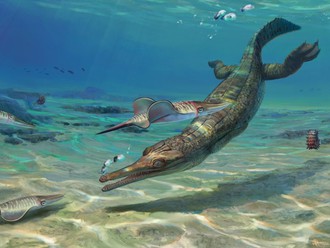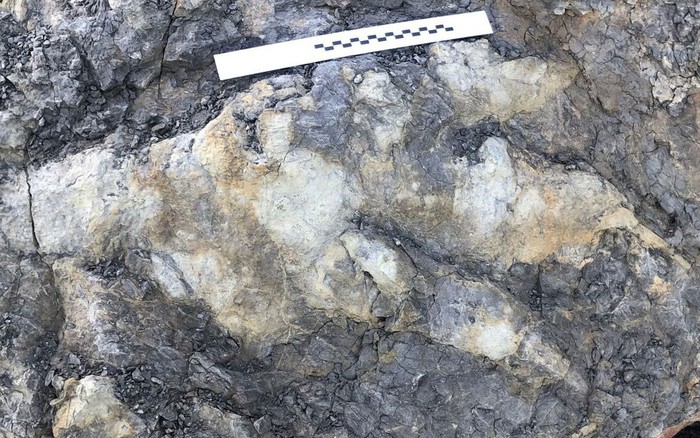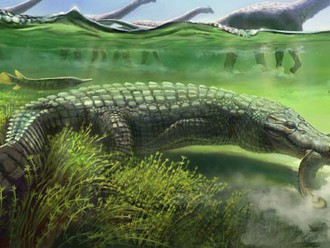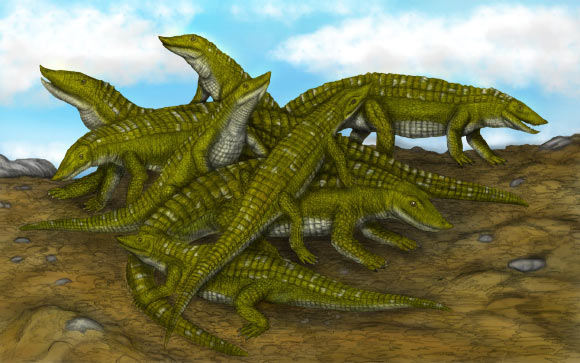New techniques have helped paleontologists decipher many of the remaining mysteries about the Aetosaur, a creature about 6 meters long of the Triassic period, which looks like a composite product of dinosaurs, eagles, and dinosaurs. crocodile.
New research published in the Journal of Vertebrate Paleontology examined the arm bone growth of the smallest and largest specimens from a “monster nest” of the species Aetosaurus ferratus from Kaltental, Germany.

The Kaltental assemblage of Aetosaurus ferratus represents the most remarkable find of the Aetosaur, a mysterious group of reptiles that lived in the late Triassic period, which is more than 200 million years old.

Cluster of fossils Aetosaurus ferratus in Kaltenta, surprisingly intact – Photo: J. Kowalski / P. Janecki
This “monster nest” has been excavated since 1877 and is of interest to many research groups around the world, including identifying the species and raising the suspicion that it is young.

According to Sci-News , using more modern techniques, the new research team – led by paleontologist lzbieta Teschner who is working at two German-Polish universities, Bonn and Opole – confirms that the animals The animals in the famous collection are juveniles, but soon exhibit gregarious behavior to fend off predators.

Perhaps that is also why they died together in an unfortunate event, when they were less than 1 year old. The phenomenon of “monster cubs” is also perpetuated in many animals today, after many years of evolution.
Although young, the body size of these animals is quite impressive, ranging from 20 to 82 cm long. The estimated adult size is up to 6 m, equivalent to a rare giant king crocodile.
Another Aetosaur, the relatively smaller Coahomasuchus, is also found in North America.

Strange appearance, like a hybrid between dinosaurs , crocodiles are attached with the bird’s head of “Aetosaur eagle lizard” – Photo: EM Teschner
The new analysis also presents a strange portrait of this group of creatures: We are four-legged reptiles, half dinosaur, half crocodile, herbivorous and omnivorous.
A special feature of this species is that their skull is a bit more like a bird’s skull than a dinosaur’s, which is also what gives them the nickname “eagle lizard”.
Source: sci.news








